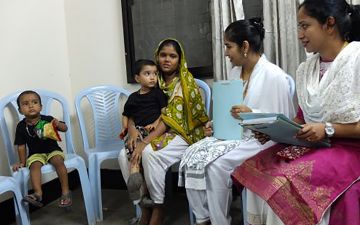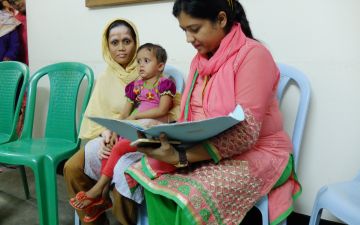Vaccines against deadly and debilitating diseases are less effective in low-income countries than in industrialized countries. Doctors started noticing in the 1960s that fewer children developed protective antibodies after getting the oral polio vaccine in Asia and Africa than in North America and Europe. In India, poor vaccine efficiency, along with sanitation issues and overcrowding, stymied efforts to eradicate polio.
It is now clear that the problem of poor vaccine efficiency does not end with polio eradication. It also affects oral vaccines for rotavirus, cholera and shigella. The Rotateq rotavirus vaccine protects 98 to 100 percent of babies in Finland and the United States from severe diarrhea, but only 40 to 60 percent of babies in Bangladesh, Kenya and Vietnam.
Carina Storrs explores the factors that could be causing poor vaccine efficiency and interventions to improve it. One possible culprit is environmental enteropathy, a common condition in areas with poor sanitation that affects absorption and immune function in the gut.
Trials are underway at several sites, including outside of Dhaka, Bangladesh, to evaluate whether programs that provide soap and clean water could reduce environmental enteropathy. These interventions are probably impractical on a large-scale, however. Other studies are testing less intensive solutions such as probiotics and anti-inflammatory drugs.
Environmental enteropathy has also been insinuated in stunted growth and delays in cognitive development. Interventions that reduce enteropathy have the potential not only to improve vaccine performance but also to lessen the burden of these other poor health outcomes.





